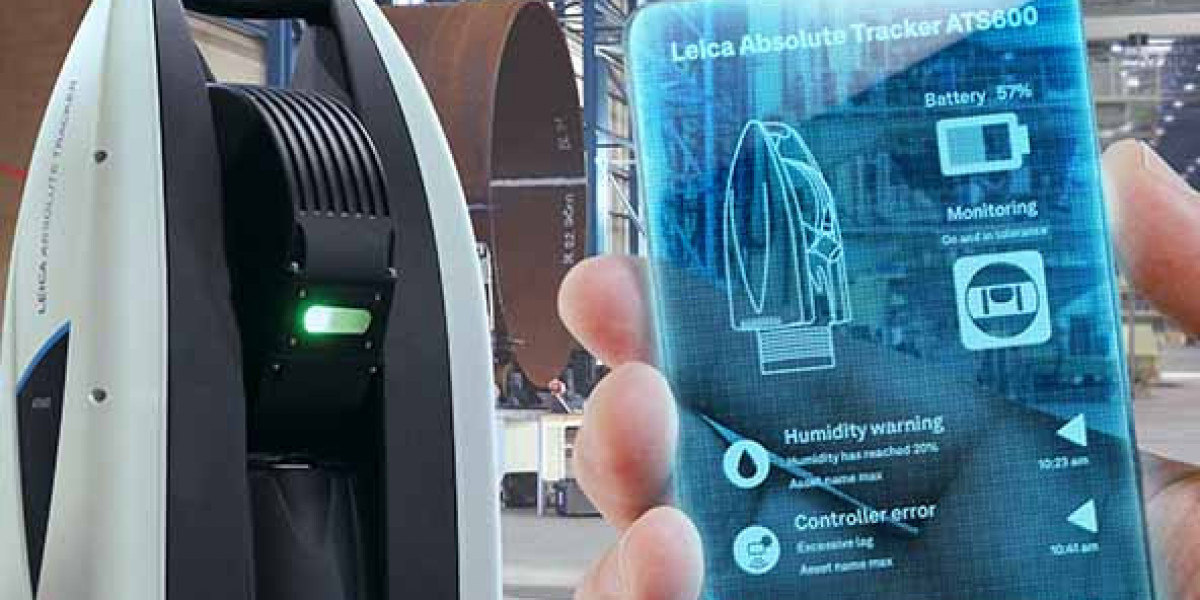Precision isn’t just important in aerospace manufacturing — it’s absolutely critical. When designing and assembling aircraft, even a fraction of a millimeter can make a difference in performance, safety, and efficiency. That’s where laser trackers come into play. These advanced measurement systems have become an essential part of modern aerospace engineering, helping manufacturers achieve the tightest tolerances possible.
If you’re looking for innovative measurement tools that redefine precision, explore Laser Trackers to see how cutting-edge technology is transforming aerospace manufacturing.
What Is a Laser Tracker?
A laser tracker is a highly precise, portable coordinate measurement device that uses laser technology to measure large-scale objects with extreme accuracy. It works by tracking a reflective target (known as a retroreflector or SMR) and calculating its exact position in 3D space.
Laser trackers can measure over long distances — sometimes up to 80 meters — while maintaining accuracy within microns. This makes them ideal for the aerospace sector, where large components like fuselages, wings, and engines need to be measured and aligned with pinpoint precision.
The Role of Precision in Aerospace Manufacturing
In aerospace manufacturing, precision is more than a goal — it’s a requirement. The sector demands flawless accuracy because even the smallest deviation can affect performance or safety.
From engine components to aircraft frames, every part must fit perfectly. This level of precision ensures:
Aerodynamic efficiency
Weight optimization
Structural integrity
Reduced maintenance needs
Laser trackers have become indispensable in achieving these objectives, allowing engineers to verify component alignment, geometry, and dimensions quickly and accurately.
How Laser Trackers Work
Laser trackers use a laser beam to locate a reflective target placed on the object being measured. Here’s how the process works in simple terms:
The tracker emits a laser beam toward the target.
The beam reflects back to the tracker.
The system calculates the distance and angle between the tracker and the target using interferometry or absolute distance measurement (ADM) technology.
With these measurements, it determines the target’s precise 3D coordinates.
The result? Real-time, highly accurate measurements that can be used for alignment, quality control, and assembly verification.
Applications of Laser Trackers in Aerospace
Laser trackers have revolutionized multiple stages of the aerospace manufacturing process. Here are some of the most common applications:
1. Component Inspection
Laser trackers are used to measure aircraft parts during production to ensure they meet design specifications. This helps identify manufacturing defects early on, preventing costly rework.
2. Assembly and Alignment
During aircraft assembly, precision alignment is crucial. Laser trackers ensure that large components such as fuselages, wings, and tail sections align perfectly.
3. Tooling Calibration
Manufacturers use laser trackers to verify and calibrate jigs, fixtures, and tooling used in production. This ensures that every part produced is within tight tolerance limits.
4. Reverse Engineering
When original design data is missing or outdated, laser trackers can create accurate 3D models of existing parts for redesign or replication.
5. Maintenance and Repair
In maintenance, repair, and overhaul (MRO) operations, laser trackers help engineers inspect and realign parts with high precision — reducing downtime and ensuring reliability.
The Benefits of Using Laser Trackers in Aerospace Manufacturing
Laser trackers offer a wide range of benefits that directly impact production efficiency, cost savings, and quality. Let’s look at how they make a difference:
1. Unmatched Precision
With sub-micron accuracy, laser trackers deliver measurement results far beyond what traditional tools can achieve. This ensures parts fit together seamlessly.
2. Portability and Flexibility
Unlike large stationary coordinate measuring machines (CMMs), laser trackers are portable and can be moved directly to the production floor. This allows engineers to measure large structures on-site.
3. Faster Measurement Times
Laser trackers provide real-time data, significantly reducing inspection and alignment times. Faster measurements mean quicker assembly and improved workflow efficiency.
4. Cost Savings
By detecting issues early and minimizing rework, laser trackers save manufacturers both time and money. The return on investment is often seen within the first few uses.
5. Improved Product Quality
Consistent, reliable measurement data ensures higher-quality production and better performance of finished aircraft.
For manufacturers seeking precision-engineered systems, Laser Trackers deliver both accuracy and productivity.
Laser Trackers vs. Traditional Measurement Methods
Before laser tracking technology, aerospace manufacturers relied on manual measurement tools or stationary coordinate measuring machines. While these methods are still useful in certain contexts, they come with significant limitations:
| Aspect | Traditional Methods | Laser Trackers |
|---|---|---|
| Mobility | Fixed or limited movement | Highly portable and flexible |
| Measurement Range | Small to medium-sized parts | Large-scale components up to 80 meters |
| Accuracy | Dependent on operator skill | Sub-micron precision |
| Speed | Slower, manual process | Fast, real-time data |
| Setup Time | Time-consuming | Quick and efficient |
Laser trackers clearly outperform traditional methods in both accuracy and efficiency, making them the gold standard for aerospace applications.
Integrating Laser Trackers with Automation
A key trend in aerospace manufacturing is the integration of laser trackers with automated systems and robotics. When connected to robotic arms or CNC machines, trackers provide continuous feedback that enhances automation precision.
For instance:
Robots can adjust their movements in real time based on tracker data.
Automated assembly lines can verify parts without manual inspection.
Quality control becomes faster, reducing production bottlenecks.
This fusion of automation and precision measurement is paving the way for smart manufacturing — a vital component of Industry 4.0.
How Laser Trackers Support Digital Twin Technology
A digital twin is a virtual replica of a physical object or system, allowing engineers to simulate and analyse performance in real time.
Laser trackers play a critical role in creating these digital twins by providing accurate 3D measurements of physical components. This data helps:
Detect design flaws early.
Improve predictive maintenance.
Reduce the time from design to production.
In aerospace, digital twins enhance product development cycles, enabling manufacturers to innovate faster while maintaining exceptional quality.
Accuracy at Every Stage of Production
The beauty of laser trackers lies in their versatility. They’re used throughout every stage of aerospace production — from initial design to final assembly and testing.
Whether it’s ensuring that engine components align perfectly or verifying the geometry of an aircraft’s outer shell, laser trackers make sure every step meets precise specifications.
This continuous verification process guarantees that every aircraft leaving the production line performs exactly as intended — safely, efficiently, and consistently.
Future Trends: The Next Generation of Laser Trackers
The evolution of laser tracking technology is far from over. Future systems are expected to feature even greater precision, faster scanning speeds, and enhanced connectivity with smart manufacturing ecosystems.
Upcoming innovations include:
AI-driven measurement analysis for faster decision-making.
Wireless connectivity for easier integration into production environments.
Smaller, lighter designs for improved portability.
Enhanced automation compatibility, making them integral to robotic systems.
These advancements will further strengthen aerospace manufacturing’s commitment to precision and efficiency.
Choosing the Right Laser Tracker for Your Aerospace Facility
When selecting a laser tracker, several factors should be considered:
Measurement range — Depending on the size of components.
Accuracy level — Match your project’s tolerance requirements.
Software compatibility — Ensure integration with existing CAD or inspection systems.
Portability and durability — Important for on-site and field operations.
Partnering with experts who understand your production environment ensures the right solution for your needs — one that improves accuracy and delivers long-term reliability.
Final Thoughts
In aerospace manufacturing, precision is everything — and laser trackers are redefining what’s possible. From aligning massive structures to inspecting intricate components, they deliver unmatched accuracy and speed.
By integrating laser trackers into production lines, aerospace companies can improve efficiency, reduce costs, and maintain the highest quality standards.








